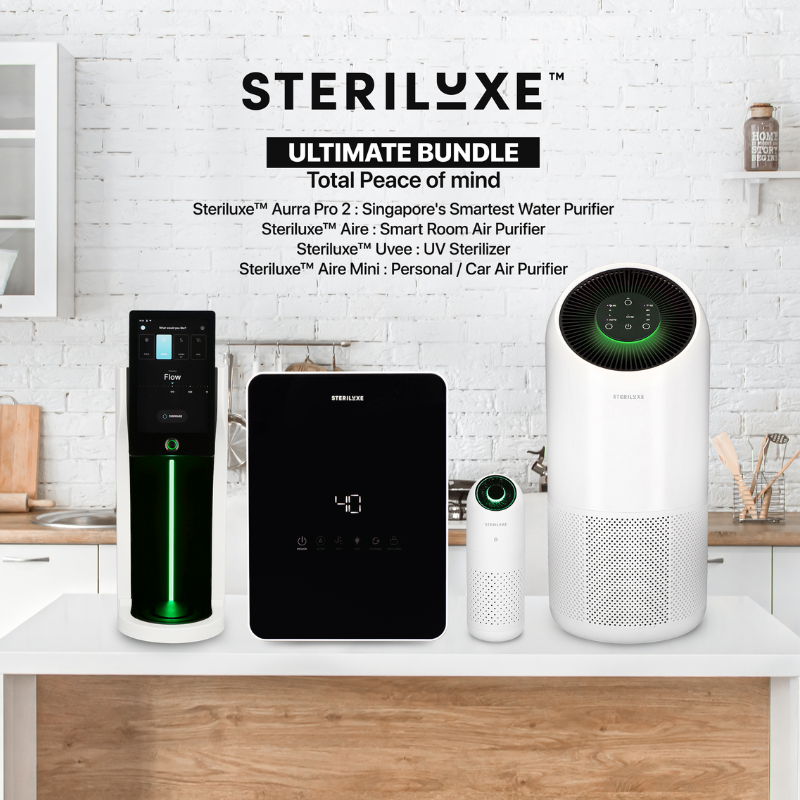Did you know that indoor air pollution can cause asthma, allergens, and other health issues? Air purifiers remove dust, pollen, and cat dander, improving indoor air quality. To maximize your air purifier's benefits, use it right. That’s why we have 11 tips to help you maximize your air purifier, from choosing the right size to knowing its limitations. These tips can help you breathe better at home, so keep reading!
Benefits of Using Air Purifiers
Air purifiers clean the air and enhance indoor air quality. This reduces the risk of air quality-related lung, allergy, and other health issues.
Air filters remove smoke, pet, and cooking odors, which improves living conditions.
Aside from cleaning your home, pollen, dust mites, and cat dander are easily removed by air purifiers. Sneezing, wheezing, and watery eyes may decrease.
Air purifiers remove asthma triggers like dust, mold spores, and cat dander. This can lead to fewer asthma attacks and less reliance on medication.
Poor indoor air quality can cause fatigue, migraines, and other productivity-reducing symptoms. By improving indoor air quality, air purifiers can help you feel more alert and focused, increasing productivity.
Air purifiers remove airborne bacteria and viruses, lowering infection risk. This is particularly important during the cold and flu season.
Air filters reduce dust and other particles, making your home cleaner. This can reduce the need for frequent dusting and vacuuming.
How to Find the Best Air Purifier
Choose a room-sized air filter. You can usually find this information on the product packaging or specification sheet.
Different air purifiers clear dust, pollen, cat dander, smoke, and chemicals. Determine which pollutants you want to remove and choose an air purifier designed to target those pollutants.
HEPA filters are the most common and remove small particles, but activated carbon filters and UV-C light filters may also be useful based on your needs.
Some air purifiers have air quality sensors, automated shutoff, and remote control. Consider which features are essential to you, and choose a purifier that includes those features.
Read reviews to learn about the air purifier's pros and cons before buying. You can also study the brand and model.
11 Tips to Get the Most Out of Your Air Purifier
Choose a room-appropriate air filter. A large purifier wastes energy and is ineffective.
Place your air purifier in a central location in the room, away from walls or furniture that could block airflow. Make sure it's not in direct sunlight or near sources of heat.
Run your air purifier constantly for best results. This ensures that the air in the room is continually being cleaned.
Follow the manufacturer's instructions for changing the filter. A dirty filter can reduce the effectiveness of your air purifier.
Close windows and doors while running your air filter to keep outdoor pollutants out.
Air purifiers work best with 30%–50% room humidity. Humidifiers and dehumidifiers keep the air humid.
Dust and dirt can accumulate outside, reducing its effectiveness. Clean the outside of the purifier regularly with a soft cloth.
Air purifiers improve indoor air quality. Use it with other air purifying methods, such as proper ventilation, cleaning, and avoiding smoking indoors.
If you have pets or allergies, choose an air purifier to remove pet dander and allergens.
Air purifiers can't clear all pollutants like carbon monoxide. Make sure you understand its limitations and use it appropriately.
Use a quality meter to test your air purifier. This can help you decide if your home needs air quality improvements.
Conclusion
Air purifiers enhance indoor air quality and health. To maximize your air purifier's benefits, use it right. Following the 11 tips above will ensure your air filter efficiently removes pollutants.
Remember to choose the right size, place it correctly, run it constantly, change the filter regularly, keep windows and doors closed, maintain proper humidity, clean the air purifier, use it with other methods, understand its limitations, and check the air quality regularly. These tips improve home air quality.
Take control of your air with the new STERILUXE Aire Smart Room Purifier! With its advanced filtration system, including a medical-grade HEPA filter, this cleaner removes 99.97% of airborne particles, including PM2.5 and harmful germs.
It also features odor neutralization with an activated carbon layer that absorbs formaldehyde, UV air disinfection to effectively remove harmful germs and bacteria, and anion functions that inhibit the growth of viruses, bacteria, and mold while regulating sleeping patterns and supporting mood.
With mobile app control and voice control through Google Assistant and Alexa, you can monitor indoor air quality, control and schedule your purifier, and breathe easily, knowing you have the best air purification technology.
Don't wait. Order your STERILUXE Aire Smart Room Purifier today and experience the benefits of clean, healthy air in your home or office!
Frequently Asked Questions
Can air purifiers remove all pollutants from the air?
Air purifiers clear dust, pollen, and pet dander. However, tiny or odorous contaminants may not be removed. Choosing an air purifier designed to remove the specific pollutants you are concerned about is essential.
Do air purifiers use a lot of energy?
Air purifiers use energy based on their size and pace. Most air filters use 50–200 watts. Some air filters have energy-saving features.
Can air purifiers make noise?
Some air purifiers can make noise, mainly if they run at high speeds. However, many modern air purifiers are designed to run quietly; some even have noise-reducing features. Choose a 50-decibel air purifier if noise is a worry.
How often should air cleaner filters be changed?
Air purifier filters should be changed according to type and usage. In general, changing the filter every 6 to 12 months is recommended. You may need to clean the filter more often if you have pets or live in a polluted area.
Can air purifiers help with COVID-19?
Air purifiers can clear airborne bacteria and viruses, but they are not a substitute for masks or social distance. They can reduce indoor transmission, especially when used with other steps.



